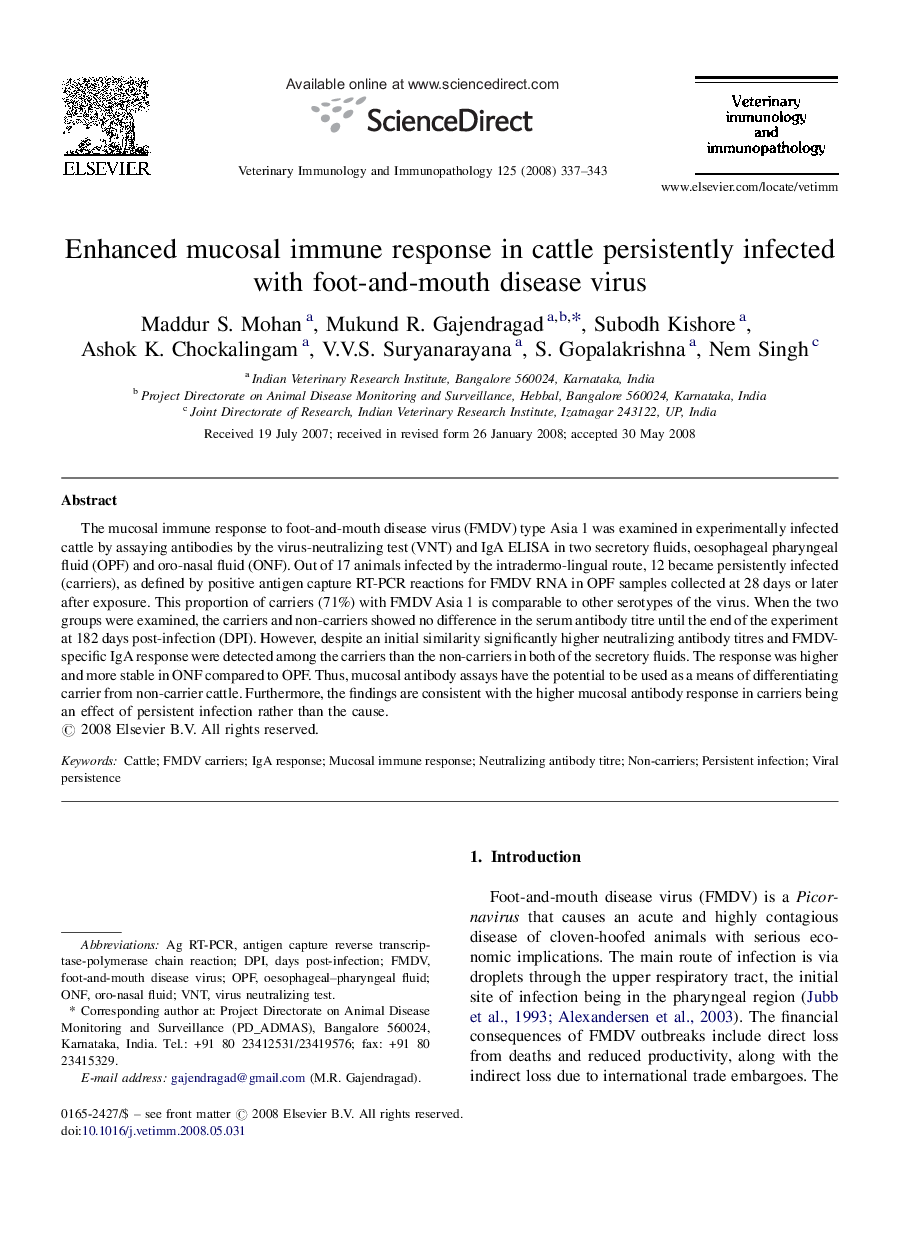| Article ID | Journal | Published Year | Pages | File Type |
|---|---|---|---|---|
| 2462996 | Veterinary Immunology and Immunopathology | 2008 | 7 Pages |
The mucosal immune response to foot-and-mouth disease virus (FMDV) type Asia 1 was examined in experimentally infected cattle by assaying antibodies by the virus-neutralizing test (VNT) and IgA ELISA in two secretory fluids, oesophageal pharyngeal fluid (OPF) and oro-nasal fluid (ONF). Out of 17 animals infected by the intradermo-lingual route, 12 became persistently infected (carriers), as defined by positive antigen capture RT-PCR reactions for FMDV RNA in OPF samples collected at 28 days or later after exposure. This proportion of carriers (71%) with FMDV Asia 1 is comparable to other serotypes of the virus. When the two groups were examined, the carriers and non-carriers showed no difference in the serum antibody titre until the end of the experiment at 182 days post-infection (DPI). However, despite an initial similarity significantly higher neutralizing antibody titres and FMDV-specific IgA response were detected among the carriers than the non-carriers in both of the secretory fluids. The response was higher and more stable in ONF compared to OPF. Thus, mucosal antibody assays have the potential to be used as a means of differentiating carrier from non-carrier cattle. Furthermore, the findings are consistent with the higher mucosal antibody response in carriers being an effect of persistent infection rather than the cause.
